Review of floor mastic and rules for its use
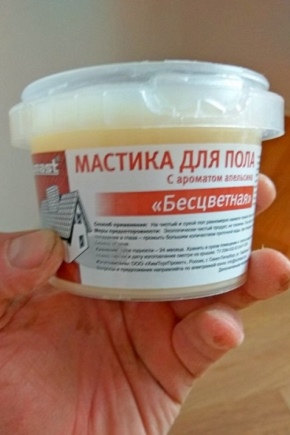
Replacing your gender is not an easy task that cannot be dealt with alone. A lot of time and effort is spent on this, so I want to make a beautiful glossy floor that does not have to be changed. You can take care of the appearance of the parquet using floor mastic.

Peculiarities
The mastic is applied on wood floors, which are the most difficult to maintain. Using this material has its pros and cons. You need to pay attention to them before buying a product and treating the floor.
The excellent composition definitely refers to the advantages of mastic over other products. In it you can find wax or polymers to which households will not be allergic. The composition of some materials is unique and contains antibacterial components. This is especially important if there are small children in the house who pull everything from the floor into their mouths. Wood is prone to wear, the appearance is terrifying after a year. The mastic preserves the quality of the floor and improves the sound insulation in the room.
The mastic is easy to apply - anyone can handle it.
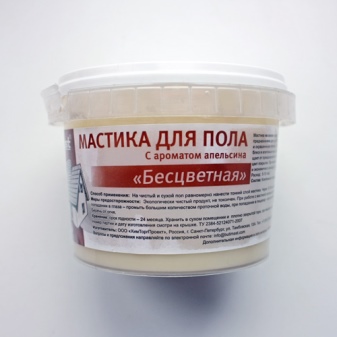
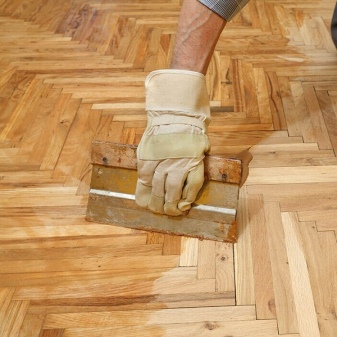
Price is another important plus. The purchase of mastic will not hit your pocket and even allow you to save on floor repairs, which will definitely be required in two to three years. The material is sold in almost all cities and can always be ordered from the online store.
If you want to take care of the safety of the tree once and for all, mastic will not work. It tends to wear off, so you need to repeat the procedure every six months or a year. However, there are types of material that hold up well for two to three years, but after that the floors will still need to be updated. Some mastics (for example, bituminous) are practically not used, because they are highly flammable and very toxic.
Working with such tools is difficult and dangerous, so it is important to understand their types before starting work.
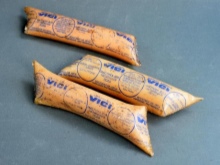
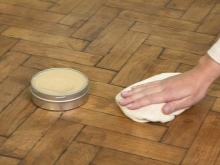
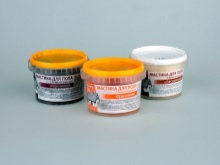
Description of varieties
Parquet and wood flooring will always be in the spotlight. It is not only unsurpassed beauty, but also a high quality flooring base. In order to extend the service life and maintain all the basic qualities of such a floor covering, it needs regular maintenance with special products. Manufacturers, in turn, have taken care of a wide, diverse selection of such products as mastic.
Wood, however, like any natural material, tends to wear out. The mastic is applied over the varnish to the wood flooring.
In this case, the varnish will last a long time, will not peel off, and the floor will look shiny and well-groomed.
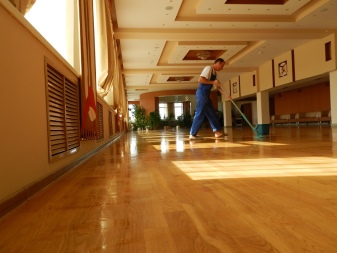
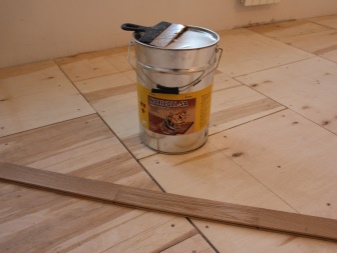
Mastic is classified according to several criteria.
- Hot. They are based on rubber or bitumen, in order to start working, the mixture must be heated to 180 degrees. You need to work with such mastic very quickly and accurately, as it instantly freezes. It is rarely used at home. It is not recommended for people who will work with a similar tool for the first time.
- Cold. You do not need to warm up such a mixture. The composition includes volatile components such as gasoline, white spirit, etc. On a freshly laid floor, such protection is applied after three days. If the product is very thick, it can be diluted with a solvent, but only with the one declared by the manufacturer, otherwise the product will lose its properties.
This species dries for a rather long time, on average, two to three days.
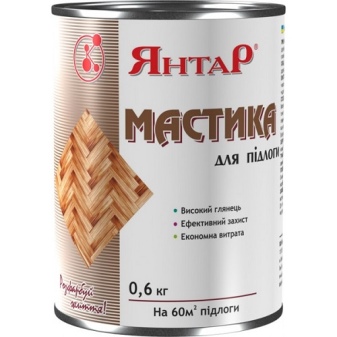
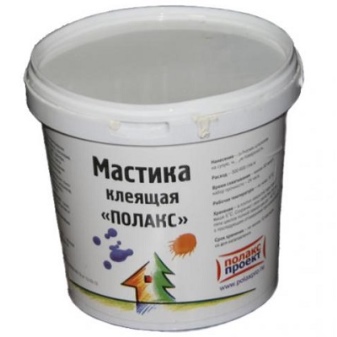
Also mastic for wood is colorless or with some shade. Shading options are usually used for floors that have lost their color and require renovation.
According to the constituent substances, mastic is divided into four main types: wax, anhydrous (turpentine), water-based, water-soluble.
- Wax. This mastic is used most often due to its special properties. It is used for application on natural wood or parquet substrates, suitable for any type of wood. It dissolves with special solvents and has improved protective qualities.
- Anhydrous. The composition also contains wax. It is diluted with a solvent, strictly in the proportions prescribed by the manufacturer. Cannot be used if bituminous adhesives have been used when laying the flooring.
- Water-based. It is considered universal. Available in liquid, solid and pasty form. Dries quickly, can be applied with a roller, brush, sponge. Helps cleanse old dirt. Great for floor polishing.
- Water soluble. It is diluted with water, mainly used for oak parquet (if you work with a different type of wood, it is recommended to reduce the amount of water). Drying takes 5 to 7 hours, excess moisture is removed with a cloth.
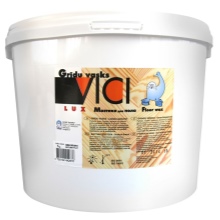
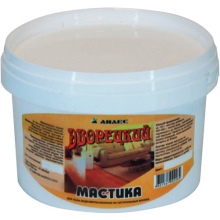

Absolutely all types of mastic are excellent adhesion agents, so they are widely used in other areas. For roofing work, bituminous or rubber mastic is used. Waterproofing - suitable for waterproofing metal and cement pipes, gutters. Polyurethane mastic is used when working in high humidity conditions (for example, installing water pipes). Polymer for waterproofing - creates a waterproof film, used in the collection of underground structures. Mastic paint - serves to renew the shade of wooden products, protects against excess moisture.
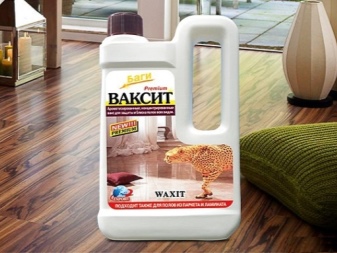
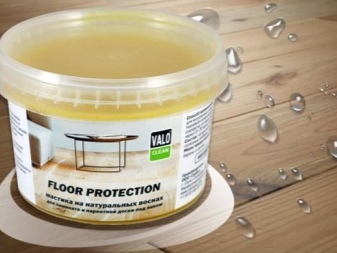
Nuances of choice
With the current abundance of goods, choosing the right mastic will not be difficult. Experts recommend that you carefully familiarize yourself with the composition and scope of the selected product, as a rule, manufacturers write all the necessary information on the packaging.
If you need care for a wooden floor, a wax-based mastic is suitable, and this option is also used for rubbing ceramic tile floors. Some types of mastic are applied for leveling under the laminate. For a concrete floor (or wall), a special bituminous concrete mastic is applicable; it can be used in the bathroom as an additional waterproofing.
In the apartment, they often use cold types of mastic, in the garage or on personal plots - hot types, since their preparation will require a specially designated place (to heat to the desired temperature). For pouring in the house, a material based on bitumen is used. This is usually done at the stage of pouring the floor, which serves as additional waterproofing.
A good, high-quality product can be found both foreign and Russian production.
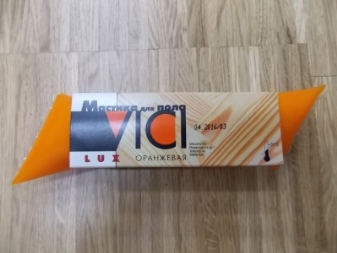
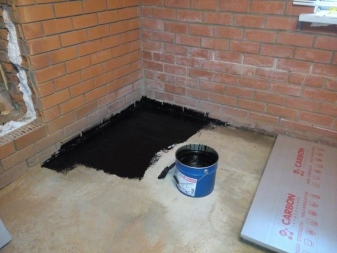
Application technology
Before starting work, be sure to read the instructions. The use of mastic can vary significantly depending on the type chosen. You also need to take into account what material the mastic is placed on, whether it is compatible with the chosen mastic.
Mix water-based mastic thoroughly. After it dries, you need to remove the excess mastic with a soft cloth. The wax mastic is very thick, so it is applied with a strong flat brush. The applied product should be carefully leveled. Turpentine protection should be applied in several steps. The floor is covered for the first time, dries completely, after which the procedure is repeated. The parquet is rubbed with a special brush.
And, of course, the most important thing is that the work surface must be completely free of dust and dirt, be dry.

You can learn how to properly apply mastic to quartz vinyl tiles from the video below.













The comment was sent successfully.